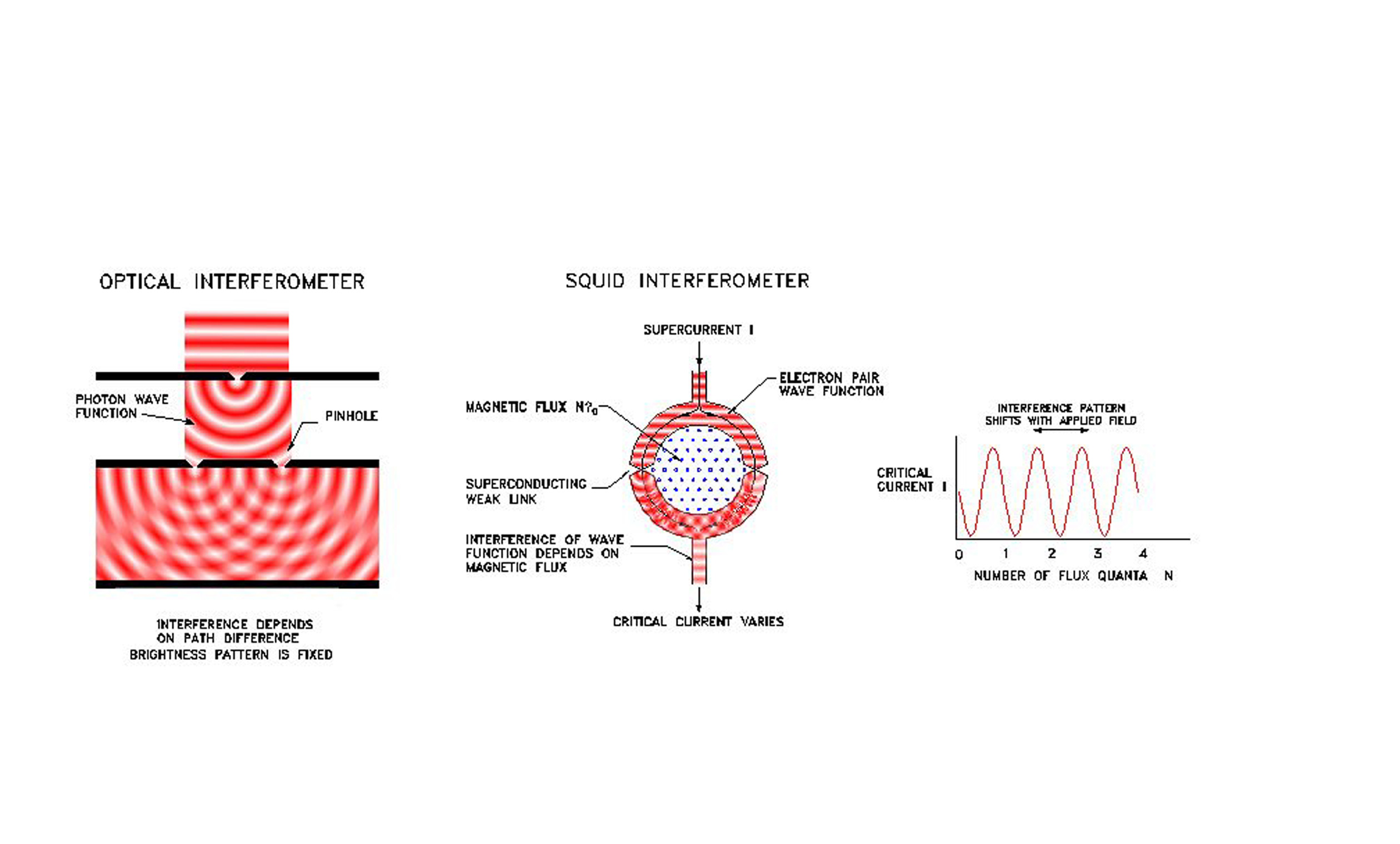
As far as STEP is concerned, the SQUID (Superconducting Quantum Interference Device) is only a very sensitive magnetometer. However, in view of the relative newness of quantum technology, a brief description of their operation is appropriate. The SQUIDs used for STEP are "DC" SQUIDs, which in their simplest form comprise a superconducting ring broken by two very narrow (~10 Angstrom) insulating gaps. Current is injected into one half of the ring and removed from the other; the output is the voltage that develops across the gaps. The SQUID works somewhat like a two-slit optical interferometer, with the gaps playing the role of slits. In the interferometer the slits are illuminated from one side by a coherent source of light waves. The waves pass through the slits and form an interference pattern on a screen opposite. The interference pattern depends on the path difference between the slits and on the wavelength used. In the DC SQUID electron pairs from the current source pass through the gaps, and their quantum mechanical wavefunctions interfere much like light waves. But the wavefunction's amplitude corresponds to the likelihood that an electron pair will cross the SQUID, rather than to brightness as in the optical case. Therefore, the resistance of the SQUID to the passage of a supercurrent depends on quantum interference. This resistance causes a voltage to develop across the SQUID.
 |
[SQUID Concept]
The effect would be interesting but less useful were it not that electrons, since they are charged, can be deflected by a magnetic field. The path difference for electrons depends on the magnetic flux enclosed by the ring, which shifts the electron's interference pattern, and changes the voltage developed. There is no optical analog of this magnetic field dependence.
The quantum interference pattern, like the optical pattern, is periodic and therefore the voltage developed across the SQUID repeats regularly with magnetic flux. The period of the variation is the flux quantum, about 2 x 10-15 weber. SQUIDs measure in units of this natural fundamental constant, and their sensitivity is therefore very stable and relatively independent of manufacturing methods . In addition to intrinsically high sensitivity, SQUIDs can be very quiet as well. SQUIDS have been built with noise levels less than 10-7 of the quantum of flux. In combination with the circuit used for STEP this results in a position sensitivity which can be better than 10-13 cm.
|
|
GP-B |
|